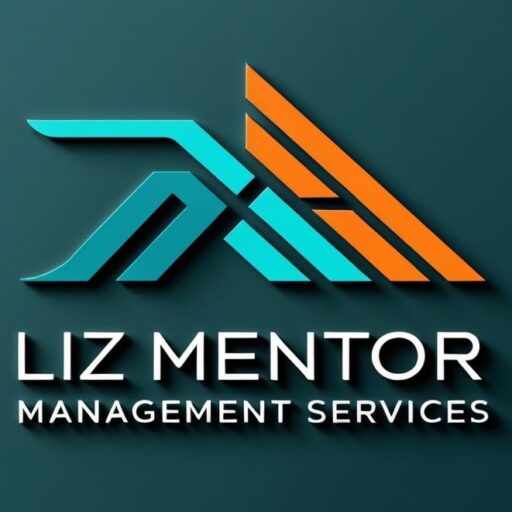Succession Planning vs. Replacement Planning: Securing Your Business’s Future
Running a successful business is about more than making sales or delivering services—it’s about ensuring that the organization thrives long-term. One of the most critical yet often overlooked aspects of business longevity is leadership continuity. What happens when a key leader leaves, retires, or moves on? How do you ensure that operations, culture, and strategy continue uninterrupted? This is where succession planning becomes vital.
Too often, companies mistake replacement planning for succession planning. While they sound similar, they are very different in both approach and outcome. Understanding the distinction can mean the difference between a smooth leadership transition and organizational disruption.
What Is Business Succession Planning?
Succession planning is a strategic process designed to ensure that your business continues to operate seamlessly even when leadership changes occur. It’s about identifying and developing internal talent so that potential future leaders are ready to step into key roles when needed.
The process isn’t just about filling a vacant position; it’s about preparing people to take on leadership responsibilities, nurturing skills, and fostering confidence so that when the time comes, the business maintains momentum. Succession planning encompasses long-term thinking, deliberate skill-building, and careful alignment with your company’s vision and values.
A strong succession plan is proactive, not reactive. It anticipates potential changes and creates a talent pipeline that supports growth and stability.
What Is Replacement Planning?
Replacement planning, on the other hand, is much narrower. It focuses solely on identifying someone to fill a specific role when it becomes vacant. There’s little consideration of long-term development or alignment with the company’s future direction.
While replacement planning can be useful for emergencies, it often leaves organizations scrambling when critical leaders depart. A replacement plan identifies a person but doesn’t always ensure they’re ready to handle the complexities of the position. The result can be disruption, decreased performance, and even loss of staff morale.
In short, replacement planning is about who can fill the role now, whereas succession planning is about who is being prepared to grow into the role in the future.
The Key Differences Between Succession Planning and Replacement Planning
Understanding the distinctions is essential for business leaders. Here are the main differences:
Time Horizon: Replacement planning is short-term; succession planning is strategic and long-term.
Development Focus: Replacement plans rarely involve skill development, whereas succession plans prioritize training, mentoring, and readiness.
Scope: Succession planning considers the broader organizational impact, aligning with culture, strategy, and values. Replacement planning is task-focused and limited to a single role.
Flexibility: Succession planning creates a pool of potential leaders, offering flexibility and resilience. Replacement planning is rigid, usually designating one individual per position.
These differences may seem subtle, but they have enormous implications for business continuity.
Why Succession Planning Matters
The departure of a key leader can cripple even the strongest companies if there is no plan in place. Businesses that invest in succession planning enjoy several benefits:
Business Continuity: Ensures operations continue seamlessly during leadership transitions.
Employee Engagement: Employees see opportunities for growth, increasing retention and motivation.
Reduced Risk: Mitigates the risk of operational disruption or strategic misalignment when key people leave.
Leadership Pipeline: Builds a ready pool of internal candidates who understand the company culture and goals.
Strategic Growth: Aligns leadership development with long-term business objectives.
Without succession planning, businesses may react impulsively to leadership gaps, leading to costly errors, cultural misalignment, and slow decision-making.
How to Decide What You Need
Before you implement a succession plan, assess your organization’s current needs. Ask questions like:
Which positions are critical to the business’s ongoing success?
Do we have internal talent ready to step into these roles?
What skills or experiences do potential leaders need to develop?
How will changes in leadership impact company culture and strategy?
Answering these questions will clarify whether your organization needs a full succession plan or a simpler replacement plan. In most cases, a proactive succession plan is the smarter choice.
Case Study: Planning for Leadership Transitions
Consider a mid-sized technology company. The CEO plans to retire in five years, and several senior managers are approaching retirement. Rather than waiting for vacancies to arise, the company starts a succession plan.
They identify high-potential employees, provide mentorship opportunities, and assign stretch projects to develop leadership skills. Regular reviews track progress and adjust development plans as needed.
By the time the CEO retires, several internal candidates are ready to step in, ensuring continuity, maintaining morale, and supporting growth initiatives. Compare this with a replacement plan approach, where the company might have struggled to find qualified candidates externally, risking operational disruption and cultural instability.
Making Succession Planning Work
Implementing an effective succession plan involves several critical steps:
Identify Key Roles: Determine which positions are essential to your business strategy and culture.
Assess Talent: Evaluate internal candidates based on potential, performance, and alignment with company values.
Develop Skills: Use mentoring, training, and rotational assignments to prepare candidates for future leadership.
Create a Plan: Document strategies, timelines, and contingency measures.
Review and Update: Succession planning is dynamic; revisit plans regularly to reflect business changes and employee development.
A strong plan integrates leadership development with the company’s long-term strategy, ensuring readiness and adaptability.
Final Thoughts
Succession planning is not optional for businesses that aim to survive and thrive. While replacement planning focuses narrowly on filling immediate gaps, succession planning builds resilience, develops talent, and secures the organization’s future.
Leaders who invest in succession planning signal a commitment to growth, employee development, and strategic continuity. By preparing people to take on leadership roles thoughtfully, organizations minimize risk, foster engagement, and create a culture of preparedness.
Remember, succession planning is not just about replacing people—it’s about grooming leaders, preserving culture, and ensuring long-term success. For any business that wants to thrive in an ever-changing world, succession planning is essential.



